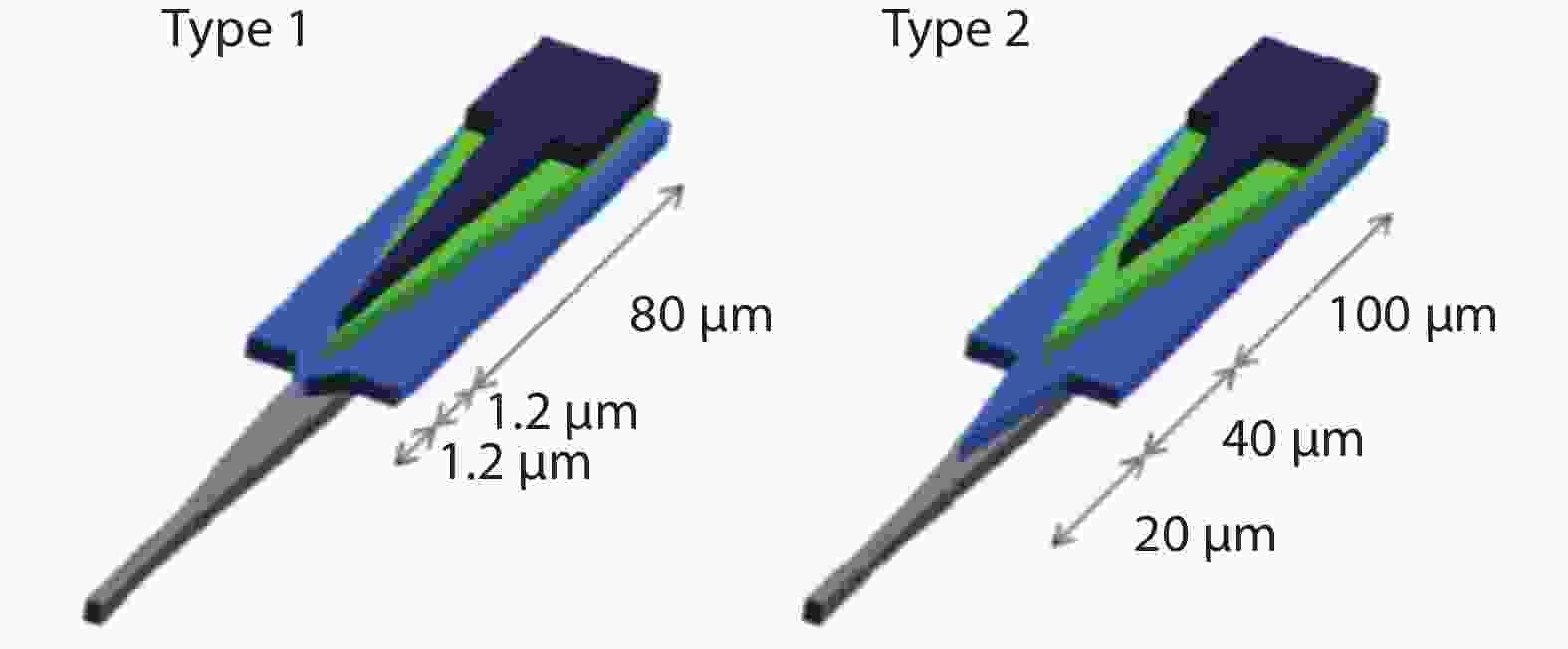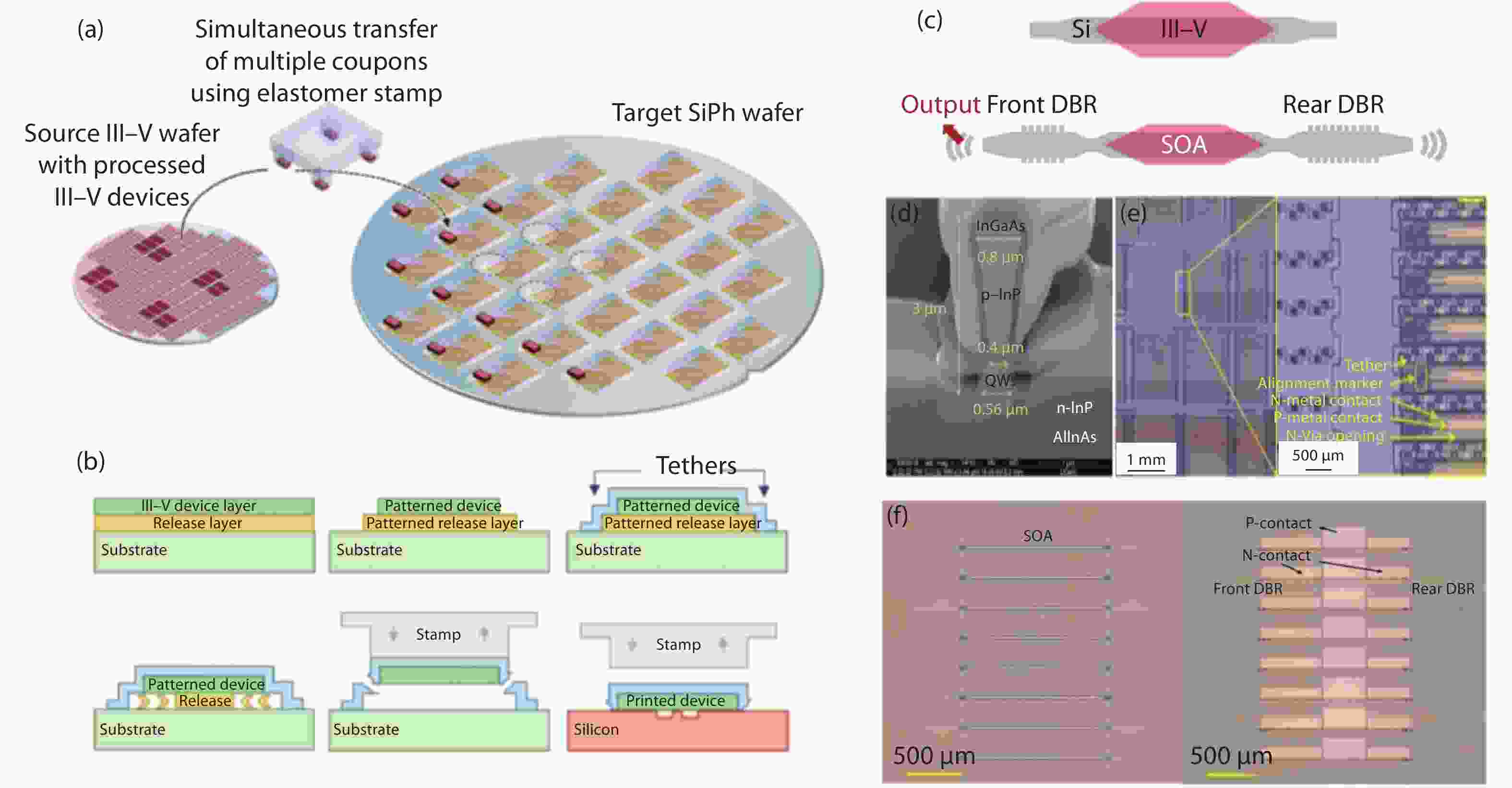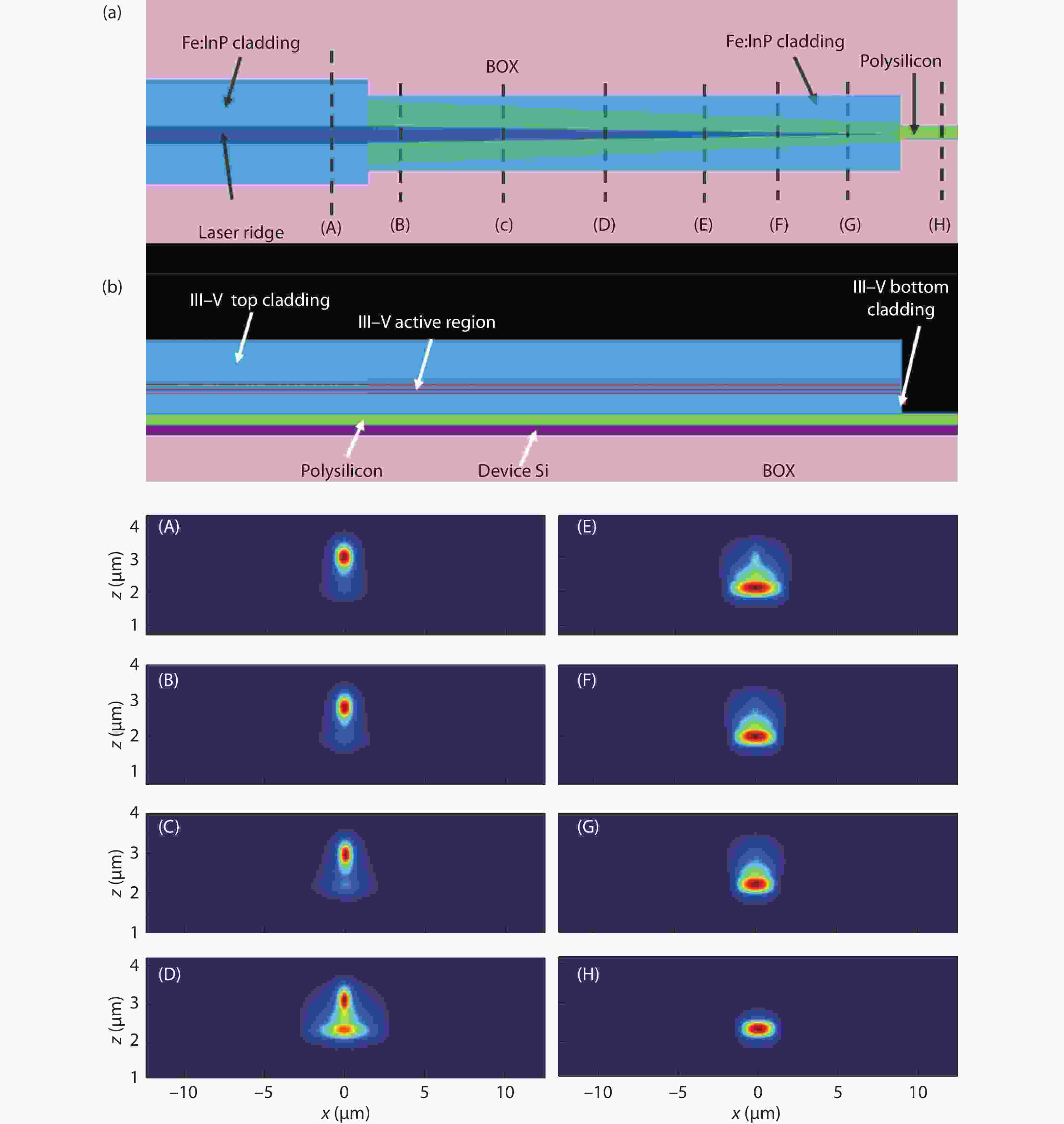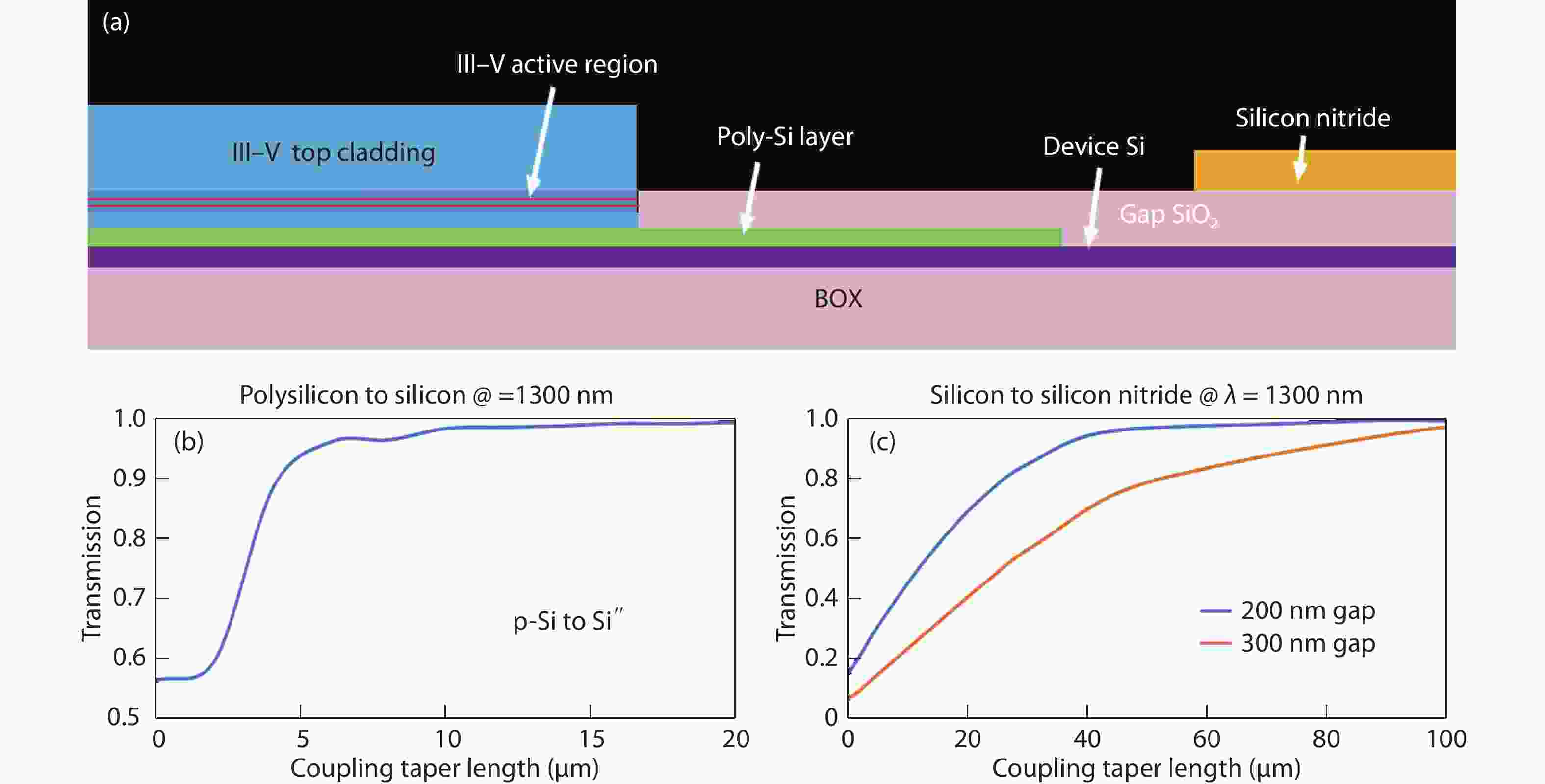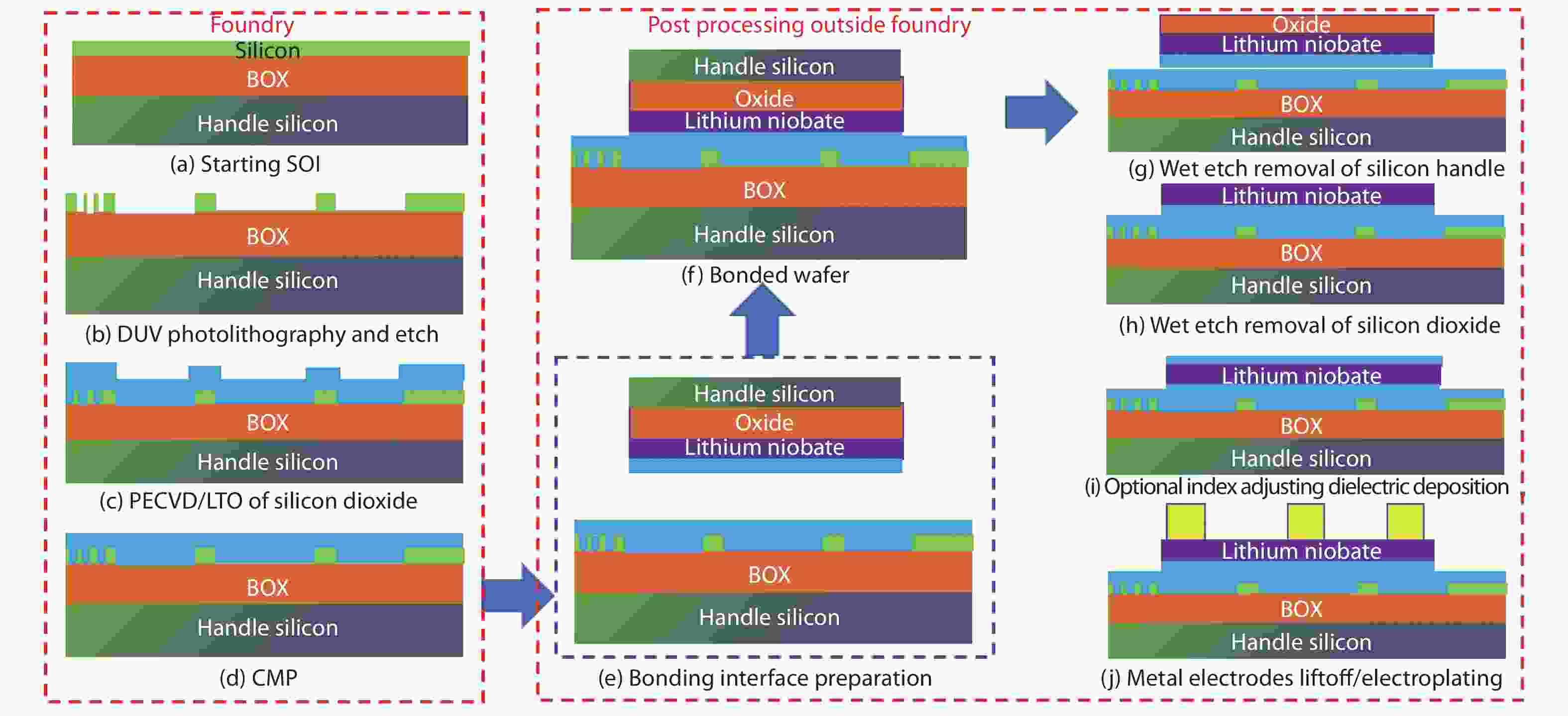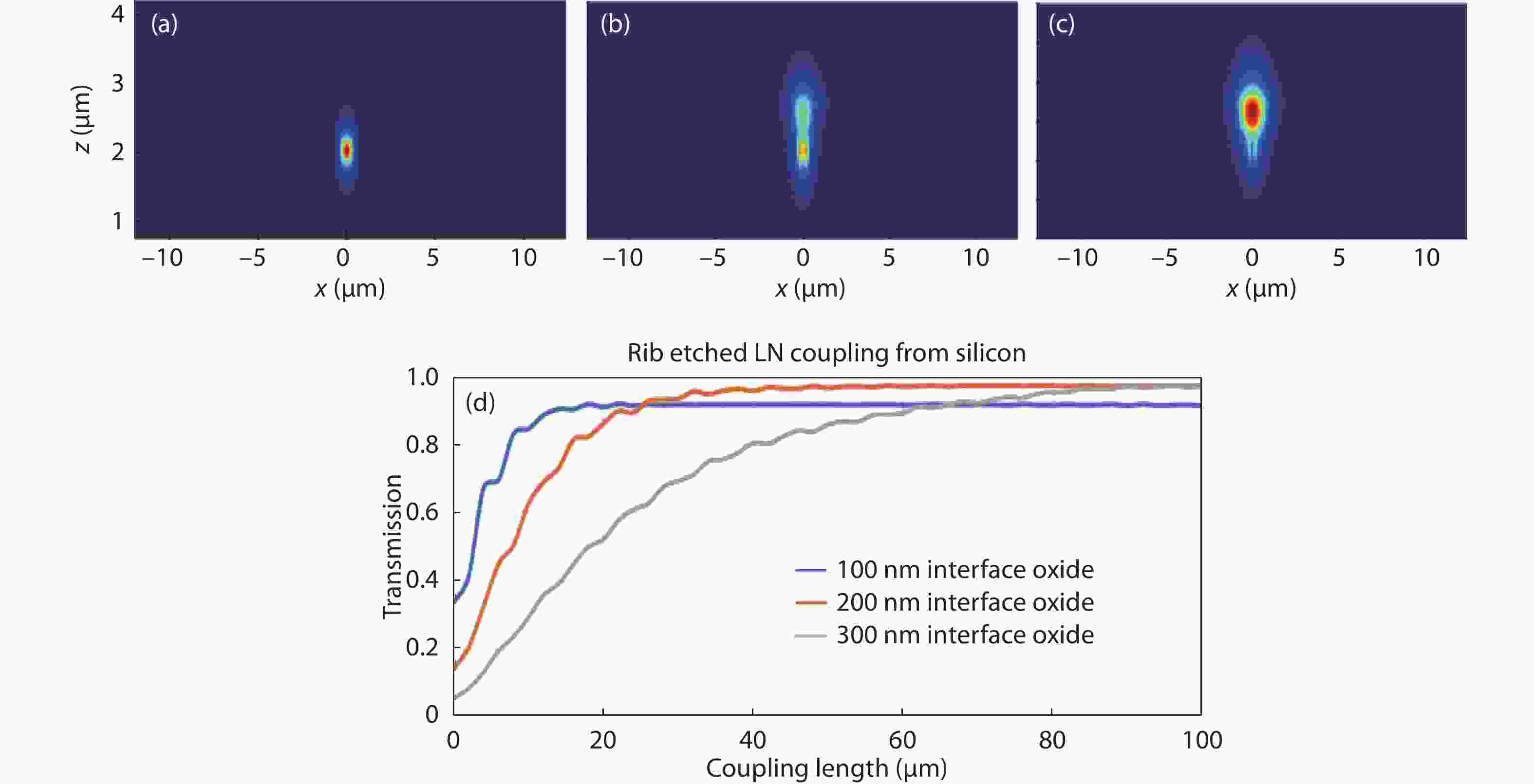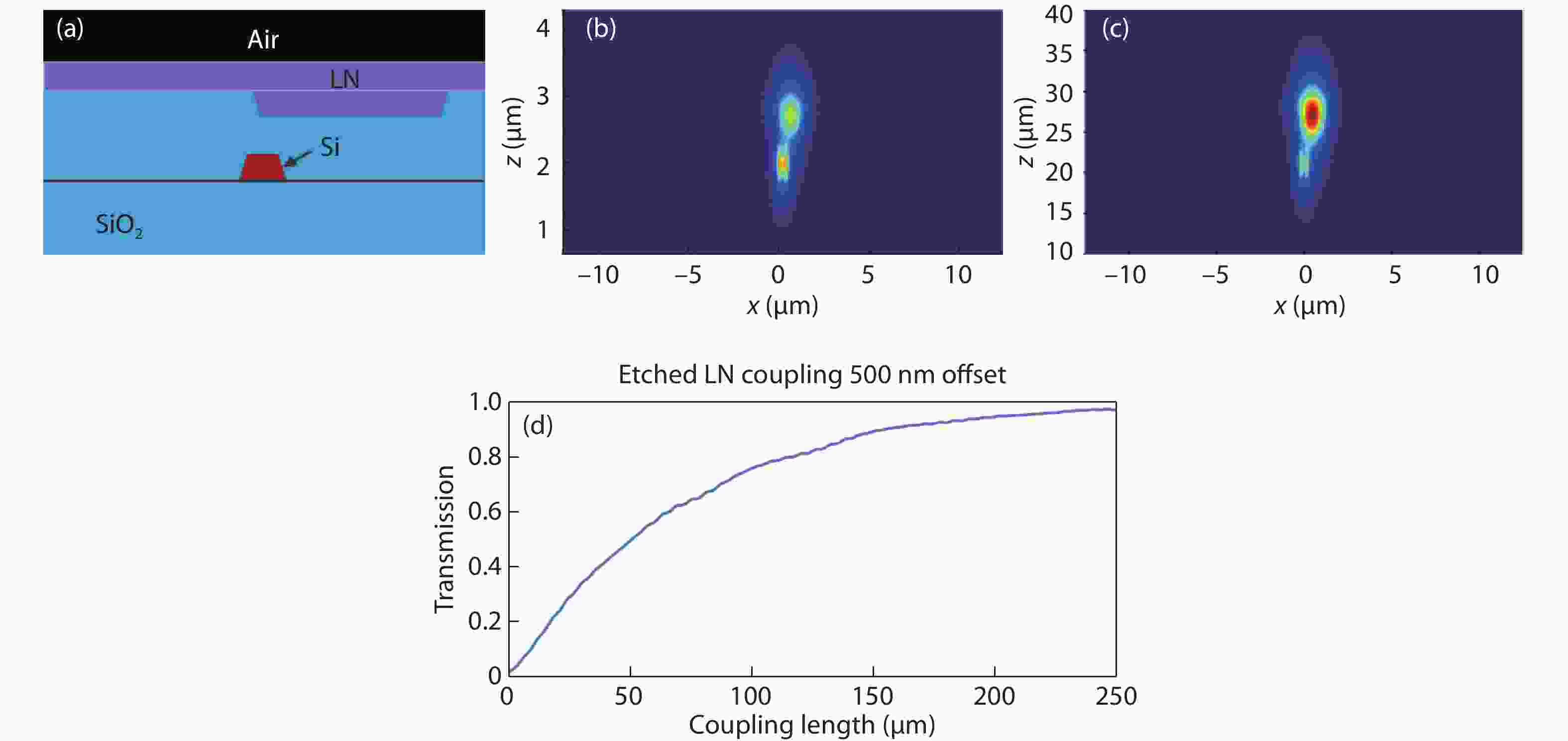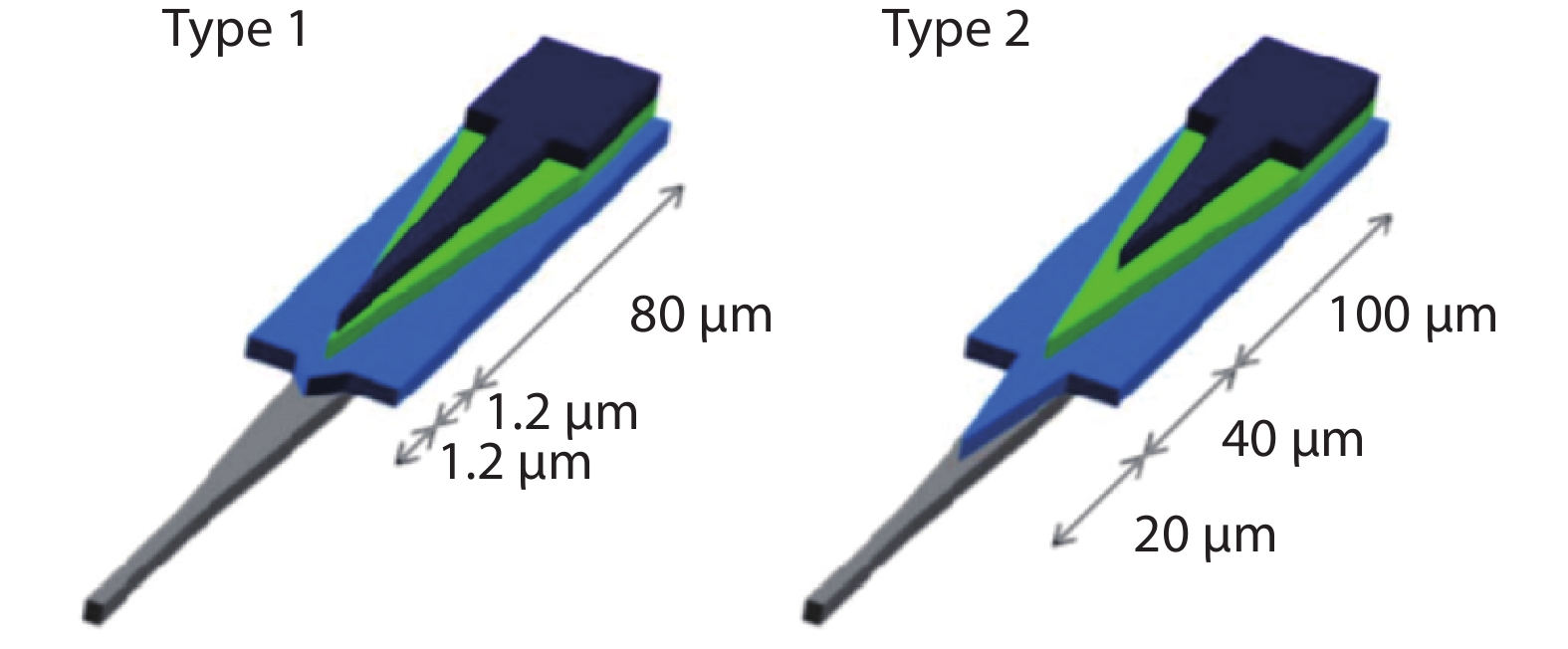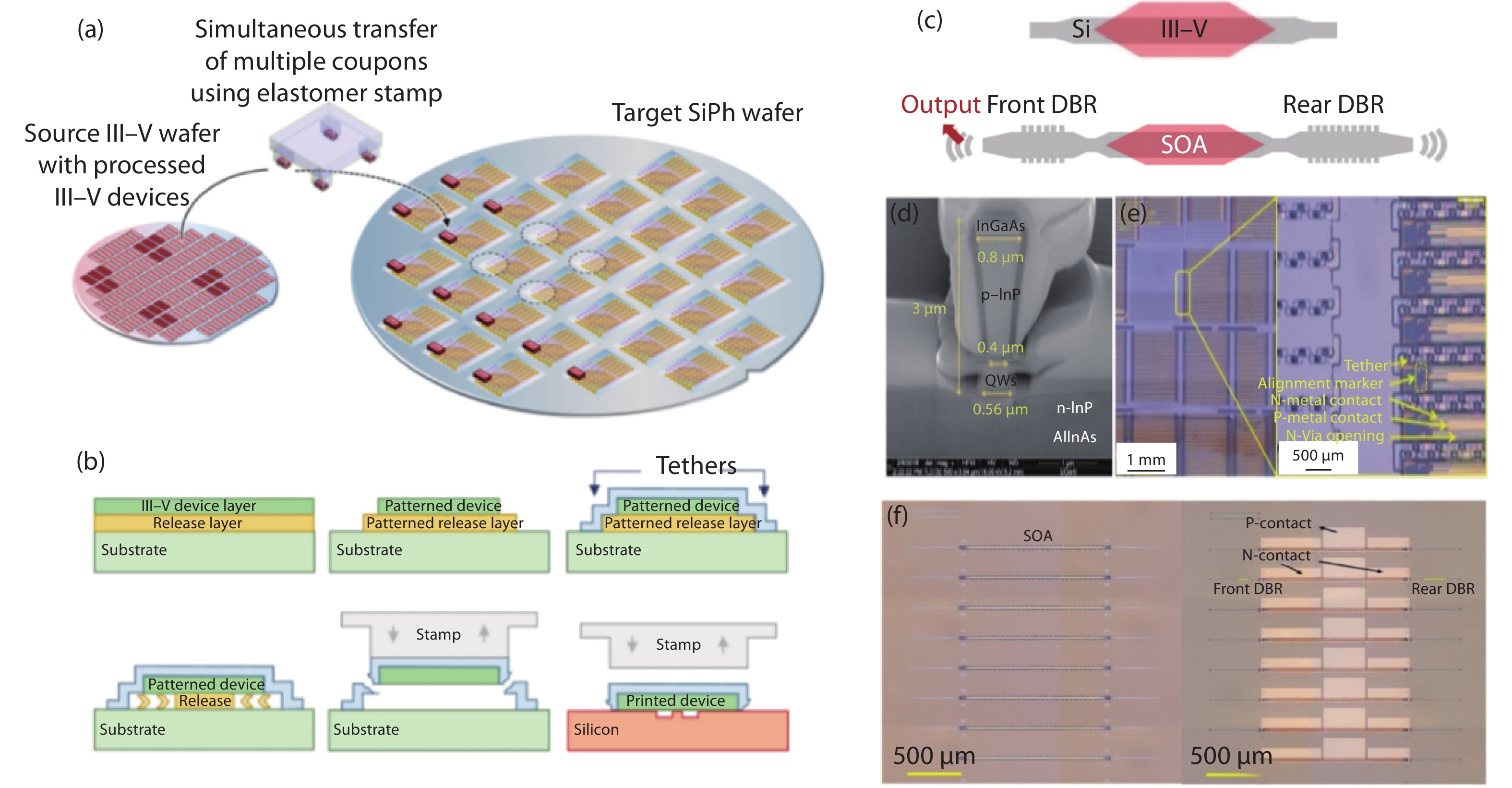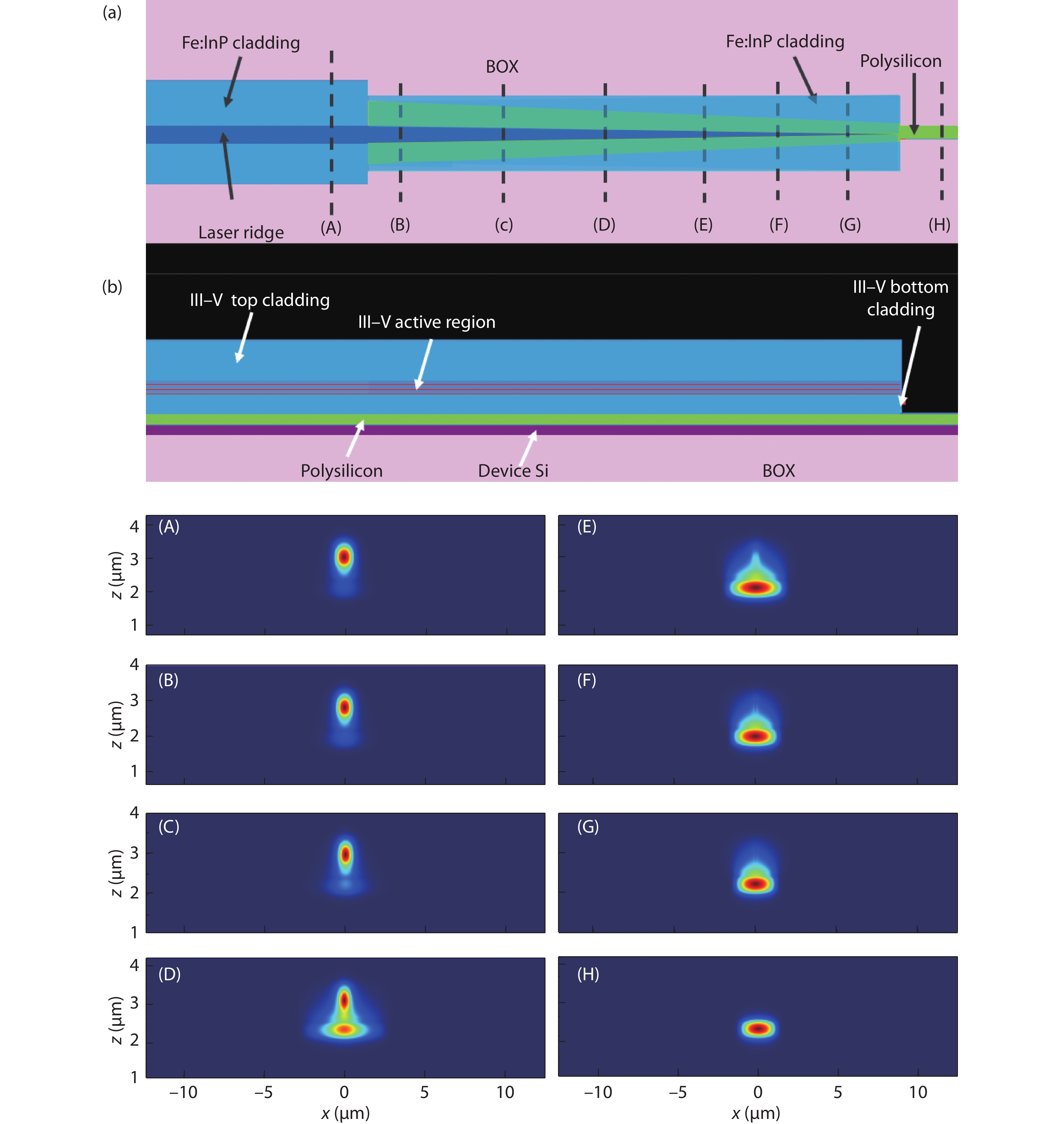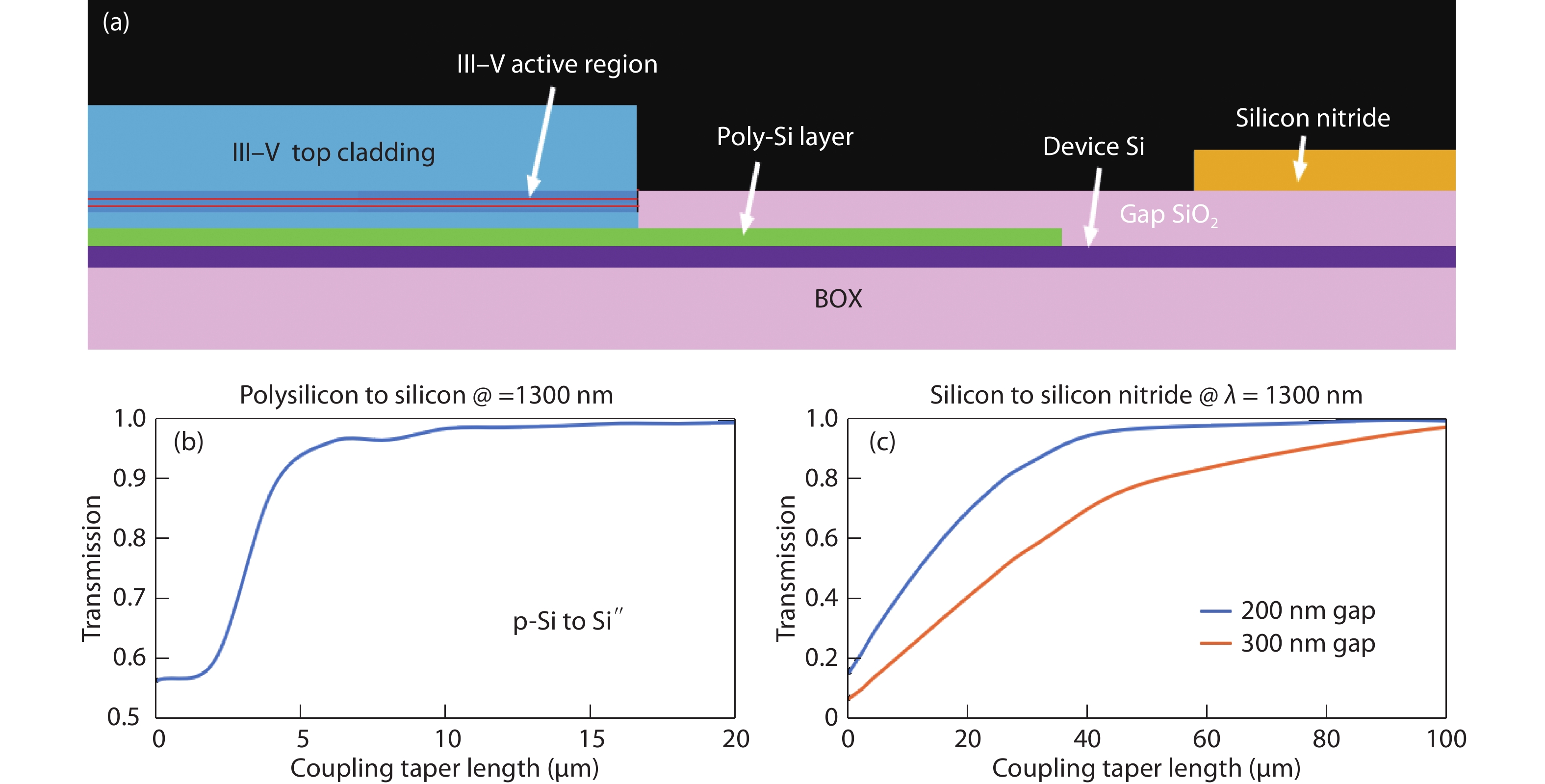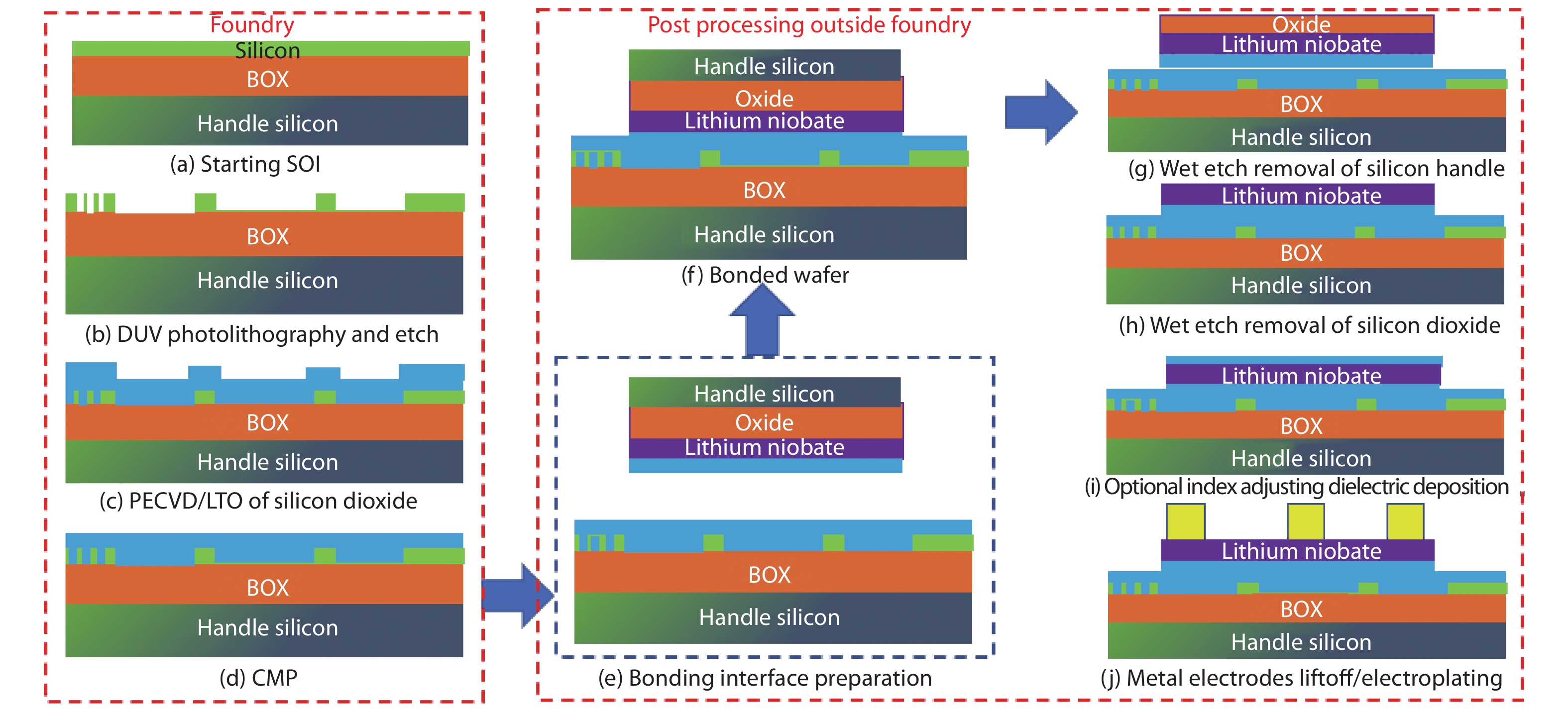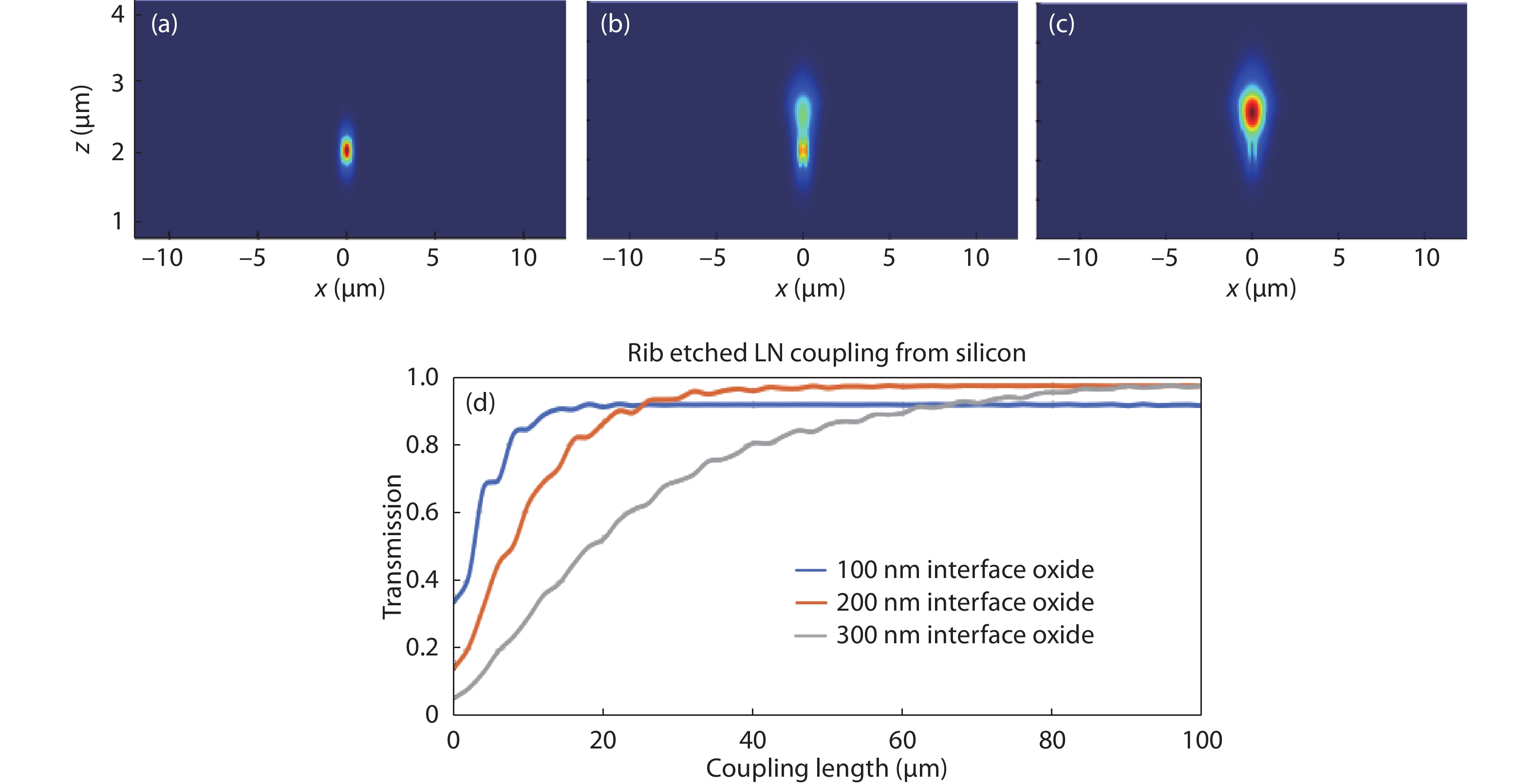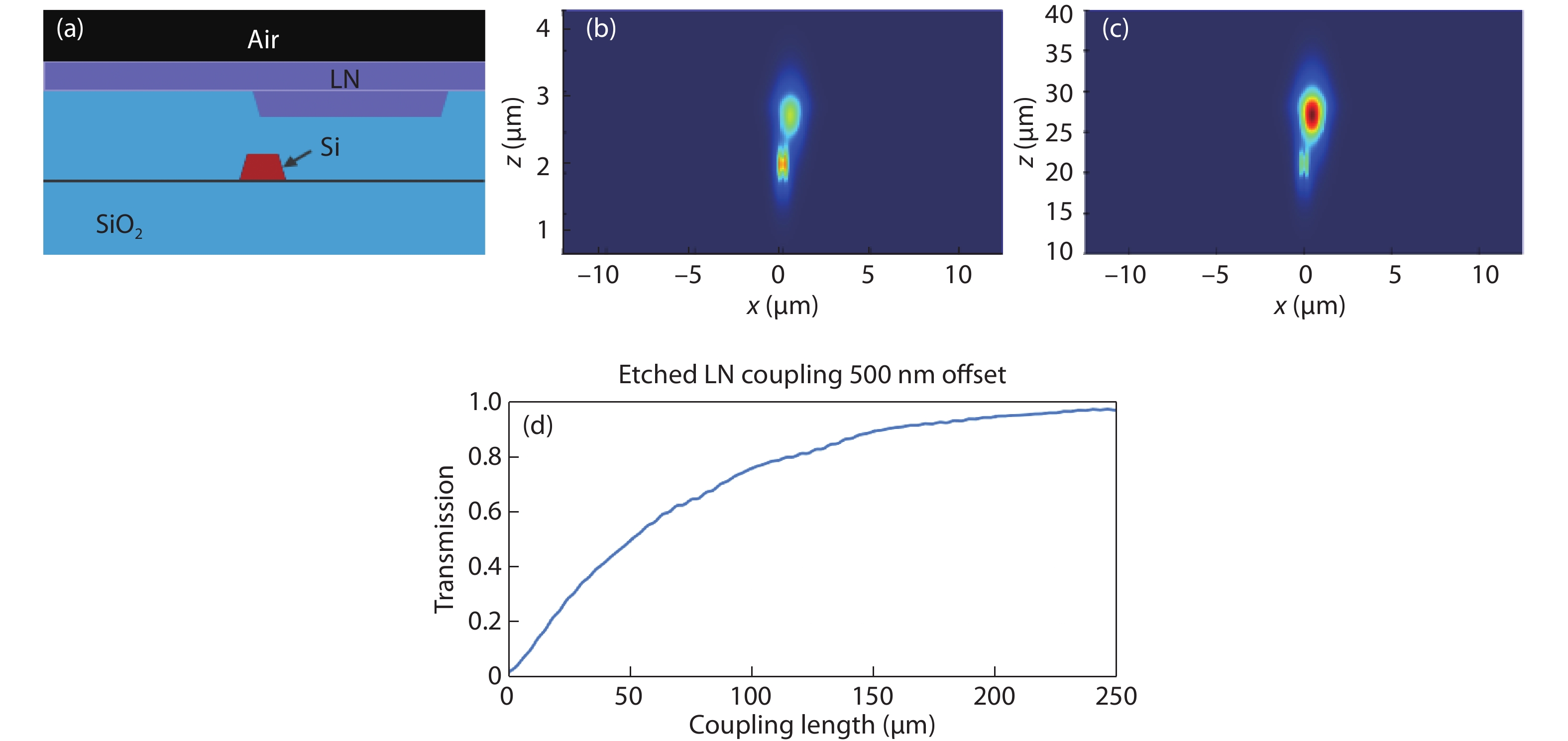| Citation: |
Swapnajit Chakravarty, Min Teng, Reza Safian, Leimeng Zhuang. Hybrid material integration in silicon photonic integrated circuits[J]. Journal of Semiconductors, 2021, 42(4): 041303. doi: 10.1088/1674-4926/42/4/041303
S Chakravarty, M Teng, R Safian, L M Zhuang, Hybrid material integration in silicon photonic integrated circuits[J]. J. Semicond., 2021, 42(4): 041303. doi: 10.1088/1674-4926/42/4/041303.
Export: BibTex EndNote
|
Hybrid material integration in silicon photonic integrated circuits
doi: 10.1088/1674-4926/42/4/041303
More Information-
Abstract
Hybrid integration of III–V and ferroelectric materials is being broadly adopted to enhance functionalities in silicon photonic integrated circuits (PICs). Bonding and transfer printing have been the popular approaches for integration of III–V gain media with silicon PICs. Similar approaches are also being considered for ferroelectrics to enable larger RF modulation bandwidths, higher linearity, lower optical loss integrated optical modulators on chip. In this paper, we review existing integration strategies of III–V materials and present a route towards hybrid integration of both III–V and ferroelectrics on the same chip. We show that adiabatic transformation of the optical mode between hybrid ferroelectric and silicon sections enables efficient transfer of optical modal energies for maximum overlap of the optical mode with the ferroelectric media, similar to approaches adopted to maximize optical overlap with the gain section, thereby reducing lasing thresholds for hybrid III–V integration with silicon PICs. Preliminary designs are presented to enable a foundry compatible hybrid integration route of diverse functionalities on silicon PICs. -
References
[1] Doerr C R. Silicon photonic integration in telecommunications. Front Phys, 2015, 3, 37 doi: 10.3389/fphy.2015.00037[2] Xie W Q, Komljenovic T, Huang J X, et al. Heterogeneous silicon photonics sensing for autonomous cars. Opt Express, 2019, 27, 3642 doi: 10.1364/OE.27.003642[3] Marpaung D, Yao J P, Capmany J. Integrated microwave photonics. Nat Photonics, 2019, 13, 80 doi: 10.1002/lpor.201200032[4] Elshaari A W, Pernice W, Srinivasan K, et al. Hybrid integrated quantum photonic circuits. Nat Photonics, 2020, 14, 285 doi: 10.1038/s41566-020-0609-x[5] Liu L, van Campenhout J, Roelkens G, et al. Carrier-injection-based electro-optic modulator on silicon-on-insulator with a heterogeneously integrated III-V microdisk cavity. Opt Lett, 2008, 33, 2518 doi: 10.1364/OL.33.002518[6] Reed G T, Thomson D J, Gardes F Y, et al. High-speed carrier-depletion silicon Mach-Zehnder optical modulators with lateral PN junctions. Front Phys, 2014, 2, 77 doi: 10.3389/fphy.2014.00077[7] Debnath K, Thomson D J, Zhang W W, et al. All-silicon carrier accumulation modulator based on a lateral metal-oxide-semiconductor capacitor. Photonics Res, 2018, 6, 149 doi: 10.1364/PRJ.6.000149[8] Wang C, Zhang M, Chen X, et al. Integrated lithium niobate electro-optic modulators operating at CMOS-compatible voltages. Nature, 2018, 562, 101 doi: 10.1038/s41586-018-0551-y[9] Eltes F, Mai C, Caimi D, et al. A BaTiO3-based electro-optic pockels modulator monolithically integrated on an advanced silicon photonics platform. J Light Technol, 2019, 37, 1456 doi: 10.1109/JLT.2019.2893500[10] Wang X L, Lin C Y, Chakravarty S, et al. Effective in-device r33 of 735 pm/V on electro-optic polymer infiltrated silicon photonic crystal slot waveguides. Opt Lett, 2011, 36, 882 doi: 10.1364/OL.36.000882[11] Yariv A, Sun X K. Supermode Si/III-V hybrid lasers, optical amplifiers and modulators: A proposal and analysis. Opt Express, 2007, 15, 9147 doi: 10.1364/OE.15.009147[12] Tanaka S, Jeong S H, Sekiguchi S, et al. High-output-power, single-wavelength silicon hybrid laser using precise flip-chip bonding technology. Opt Express, 2012, 20, 28057 doi: 10.1364/OE.20.028057[13] Li Q, Lau K M. Epitaxial growth of highly mismatched III-V materials on (001) silicon for electronics and optoelectronics. Prog Cryst Growth Charact Mater, 2017, 63, 105 doi: 10.1016/j.pcrysgrow.2017.10.001[14] Roelkens G, Abassi A, Cardile P, et al. III-V-on-silicon photonic devices for optical communication and sensing. IEEE Photonics J, 2015, 3, 969 doi: 10.3390/photonics2030969[15] Roelkens G, van Thourhout D, Baets R, et al. Laser emission and photodetection in an InP/InGaAsP layer integrated on and coupled to a silicon-on-insulator waveguide circuit. Opt Express, 2006, 14, 8154 doi: 10.1364/OE.14.008154[16] Tatsumi T, Tanabe K, Watanabe K, et al. 1.3 μm InAs/GaAs quantum dot lasers on Si substrates by low-resistivity, Au-free metal-mediated wafer bonding. J Appl Phys, 2012, 112, 033107 doi: 10.1063/1.4742198[17] Hong T, Ran G Z, Chen T, et al. A selective-area metal bonding InGaAsP–Si laser. IEEE Photonics Technol Lett, 2010, 22, 1141 doi: 10.1109/LPT.2010.2050683[18] Liang D, Bowers J E. Highly efficient vertical outgassing channels for low-temperature InP-to-silicon direct wafer bonding on the silicon-on-insulator substrate. J Vac Sci Technol B, 2008, 26, 1560 doi: 10.1116/1.2943667[19] Zhang J, Muliuk G, Juvert J, et al. III-V-on-Si photonic integrated circuits realized using micro-transfer-printing. APL Photonics, 2019, 4, 110803 doi: 10.1063/1.5120004[20] de Beeck C O, Haq B, Elsinger L, et al. Heterogeneous III-V on silicon nitride amplifiers and lasers via microtransfer printing. Optica, 2020, 7, 386 doi: 10.1364/OPTICA.382989[21] Park H, Fang A, Kodama S, et al. Hybrid silicon evanescent laser fabricated with a silicon waveguide and III-V offset quantum wells. Opt Express, 2005, 13, 9460 doi: 10.1364/OPEX.13.009460[22] Kurczveil G, Pintus P, Heck M J R, et al. Characterization of insertion loss and back reflection in passive hybrid silicon tapers. IEEE Photonics J, 2013, 5, 6600410 doi: 10.1109/JPHOT.2013.2246559[23] Meitl M A, Zhu Z T, Kumar V, et al. Transfer printing by kinetic control of adhesion to an elastomeric stamp. Nat Mater, 2006, 5, 33 doi: 10.1038/nmat1532[24] Wang X X, Weigel P O, Zhao J, et al. Achieving beyond-100-GHz large-signal modulation bandwidth in hybrid silicon photonics Mach Zehnder modulators using thin film lithium niobate. APL Photonics, 2019, 4, 096101 doi: 10.1063/1.5115243[25] Tang Y, Peters J D, Bowers J E. Over 67 GHz bandwidth hybrid silicon electroabsorption modulator with asymmetric segmented electrode for 1.3 μm transmission. Opt Express, 2012, 20, 11529 doi: 10.1364/OE.20.011529[26] Menard E, Lee K J, Khang D Y, et al. A printable form of silicon for high performance thin film transistors on plastic substrates. Appl Phys Lett, 2004, 84, 5398 doi: 10.1063/1.1767591[27] Safian R, Teng M, Zhuang L M, et al. Foundry-compatible thin film lithium niobate modulator with RF electrodes buried inside the silicon oxide layer of the SOI wafer. Opt Express, 2020, 28, 25843 doi: 10.1364/OE.396335[28] Ayata M, Fedoryshyn Y, Heni W, et al. High-speed plasmonic modulator in a single metal layer. Science, 2017, 358, 630 doi: 10.1126/science.aan5953[29] Thomaschewski M, Zenin V A, Wolff C, et al. Plasmonic monolithic lithium niobate directional coupler switches. Nat Commun, 2020, 11, 1 doi: 10.1038/s41467-020-14539-y -
Proportional views






 DownLoad:
DownLoad:
